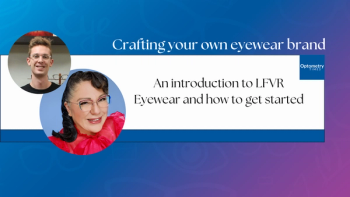
Controversies in Modern Eye Care 2023: Catching the signs and symptoms of thyroid eye disease
Selina McGee, OD, FAAO, Dipl ABO, shares highlights from her featured symposium, "Thyroid eye disease: The masquerading eye disorder," which she co-presented during the 2023 Controversies in Modern Eye Care meeting.
Selina McGee, OD, FAAO, Dipl ABO, shares key takaways from her discussion, "Thyroid eye disease: The masquerading eye disorder," which she co-presented during the 17th annual Controversies in Modern Eye Care symposium at the Skirball Cultural Center in Los Angeles, California.
This transcript has been edited for clarity.
Selina McGee, OD, FAAO, Dipl ABO:
Hi, I'm Dr. Selina McGee, and I am coming to you from Los Angeles, California, and our Controversies in [Modern] Eye Care meeting. I'm gonna be talking about thyroid eye disease, and I am privileged to share the stage with three other surgeons.
What my part is going to be talking about is looking for patients in our common population, and common symptoms that you and I would see every day, that might lead us down a different path with thyroid eye disease.
So we all see patients with ocular surface disease and dry eye disease, and something that we need to be really mindful of is patients with thyroid eye disease often will present with dry eye disease. So that's a big one, because as an optometrist serving as a primary care person for our eye health patients, you and I are often going to be the ones that diagnose the patient, and see these patients first. And because there's such a delay in patients getting the proper diagnosis with thyroid eye disease, it's really important that that goes up on our differential.
When we see a patient who has a history of Grave's disease, but also hypothyroidism and euthyroidism—because 10% of patients can still get thyroid eye disease that have are euthyroid or actually have hypothyroidism, which I think some of us would be surprised about.
Other things that we should be looking for: 91% of those patients are going to have eyelid retraction. There are going to be patients that look like they have allergic contact dermatitis because they have all that chemosis and swelling in that initial stage that can often get misdiagnosed.
So it's really important if you suspect allergic conjunctivitis, that looking for: do they have papilla, what else is going along with this? And if you have a suspicion, then we should be ordering bloodwork like TSI. That will tell us what's actually happening with IGF1R, and what's happening with thyroid eye disease.
I'm happy to share more, and I love that you guys have all joined and helping take care of these patients that battle with thyroid eye disease because it can really lead to anxiety, depression. The average cycle of this for a patient is 6 years, and an active part of that is about 2-3 years but patients will still be suffering for that entire 6 years. They will spend about 20 doctor's visits per year, and so the quality of life of our thyroid eye patients is really critical and we can't overlook how this impacts them as an entire person. So thank you for being here and excited to share.
Newsletter
Want more insights like this? Subscribe to Optometry Times and get clinical pearls and practice tips delivered straight to your inbox.


















































.png)


